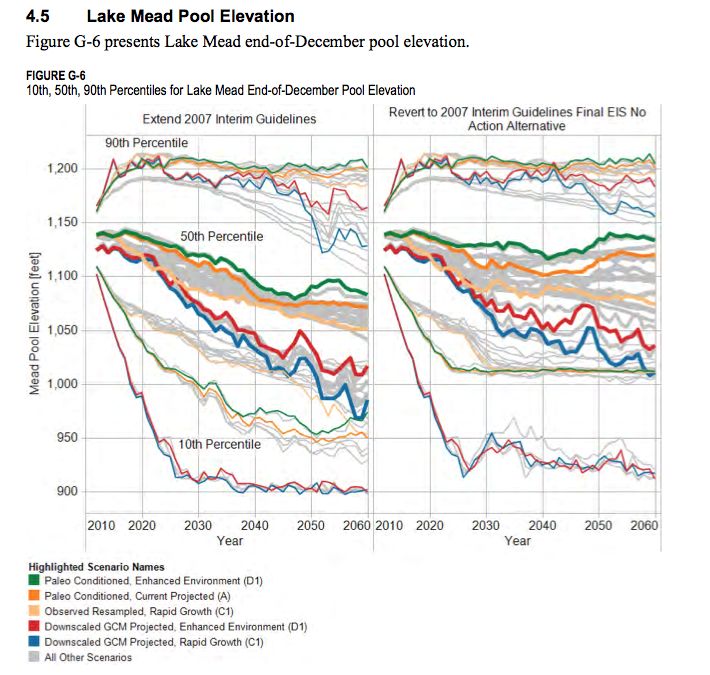High good, low bad: Mead in January 2013
Posted on | January 31, 2013 | No Comments
 It’s a curious world in which the release of the same amount of water from an upstream Colorado River reservoir (Lake Powell) produces three different elevations in the receiving downstream reservoir (Lake Mead). But as this federal Bureau of Reclamation explanation of the dry, moderately dry and wet scenarios for the 2013 water year modeled in the above graphic spells it out, it’s all about the “intervening flows.” Those intervening flows diminish when snowpack in the Rockies is lousy and the river’s managers at Reclamation have to augment with previously impounded water.
It’s a curious world in which the release of the same amount of water from an upstream Colorado River reservoir (Lake Powell) produces three different elevations in the receiving downstream reservoir (Lake Mead). But as this federal Bureau of Reclamation explanation of the dry, moderately dry and wet scenarios for the 2013 water year modeled in the above graphic spells it out, it’s all about the “intervening flows.” Those intervening flows diminish when snowpack in the Rockies is lousy and the river’s managers at Reclamation have to augment with previously impounded water.
If the fund of previously impounded water were inexhaustible, we in the dry West would be less crazy relying on growth as a business model. But it’s not. And the lower we drive reservoir levels, the closer we come to shortages being called in contracted deliveries. To understand the balancing act that is managing the Colorado river — how much comes in every year, how much may be let out, and how those flows are likely to diminish in the face of climate change, everyone concerned with western water should attempt to penetrate the recently published Colorado River Basin Water Supply and Demand Study. For a future shock cousin of the relatively sedate decline modeled above, click on the jump for a graphic from the basin study’s Technical Report G “System Reliability Analysis and Evaluation of Options and Strategies.”
On the last day of January, 2013, the Colorado River’s system contents were estimated by Reclamation to be 55% full, 10% down from last year. Lake Mead hovered at around 1,122.39 feet, or roughly 53% full, more than 55 feet lower than the comparable closing elevation for January 2002, the year when it was finally recognized that a long-term dry spell was about to grip the Colorado system. At the end of January, 2013, Mead’s upstream feeder reservoir Lake Powell was 50% full. Click graphics to enlarge images.
Tags: chance of rain > Emily Green > Lake Mead elevations
Comments
Leave a Reply



